There is a lot to consider when buying binoculars - its glass quality and size to whether you can use them with your glasses on.
But what one feature do you start with?
Magnification.
Determining the best binocular magnification starts with an evaluation of intended applications. The 8-10x magnification range is the standard for general use. 7x is best suited to compact, handheld use. 12x and higher perform best for long-range, tripod-mounted applications.
When you can determine what you want binoculars for, you can be more specific about what you want out of them be it for birding, hunting, or UFO-spotting.
How to Choose Binocular Magnification
Choosing the right magnification for binoculars must start with an evaluation of intended applications and knowing what the numbers on binoculars mean. 8x-10x magnification is the standard for all-purpose use. Outside this range, you can be more specific as to what you want out of your binoculars.
Binocular Magnification Chart
| ACTIVITY | BEST MAGNIFICATION | RECOMMENDED CONFIGURATIONS |
|---|---|---|
| Hunting | 8x, 10x | 8x42, 10x42, 10x50, 12x50 |
| Bow Hunting | 6x, 7x, 8x | 7x28, 8x42 |
| Birdwatching | 7x, 8x, 10x | 8x32, 8x42, 10x42 |
| Elk Hunting | 8x, 10x, 12x | 8x42, 10x42, 12x50 |
| Stargazing | 10x, 12x, 20x, 25x | 10x50, 12x50, 20x60, 25x70 |
| Wildlife | 8x, 10x | 8x42, 10x42, 10x50 |
| Boating | 7x | 7x50 |
| Sporting Events | 6x, 7x, 8x, 10x | 7x28, 8x32, 8x42, 10x25 |
| Safari | 7x, 8x, 10x | 8x42, 10x50 |
| Whale Watching | 7x, 8x, 18x, 20x | 7x50, 8x32, 20x60 |
| Concerts | 3x, 4x, 8x | 4x20, 7x28, 10x25 |
Best Binocular Magnification for Hunting
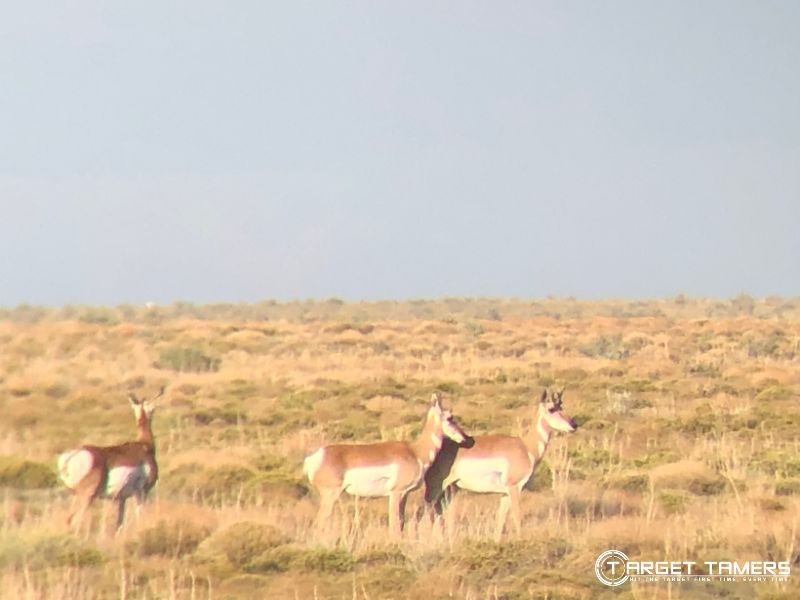
Choosing the right magnification for hunting binoculars should be specific to the hunt and all that it entails. A bow hunter in thick timber in a treestand will require something different to the pronghorn hunter who is also judging trophy status from long distances.
Treestand and brush hunters can benefit from low powers such as 6x, 7x, and 8x magnification to pick apart details with wide FOVs and image stability with freehand use.
In the mountains and Western terrain, 10x magnification is a staple power for its ease of use combined with high power and wide FOVs. You can go higher in power to 12x and 15x, but you will need a tripod or monopod to make it usable and steady for long-range distances.
Given that many game and predators are active in lowlight conditions, pairing a larger aperture with your choice of magnification can increase brightness and resolution.
Regardless of the type of hunt you’re on, binoculars will prove essential for tracking downed game.
Best Binocular Magnification for Bow Hunting
Much like a general hunting binocular, a bow hunting binocular should have magnification between 7x to 10x. The terrain and conditions will determine how much power is required.
The lower the power, the wider the FOV and easier it is to use off-hand. The 7x and 8x powers will be ideal for the treestand and timbers. 42mm apertures will allow more than sufficient brightness to navigate the terrain.
In the opposite types of terrain, you can opt for higher power like 12x, but you’d still need to get closer to make the shot with a bow in hand. It can be worth staying low in magnification, no more than 10x, for the wider FOV to spot game especially when they’re bedded down.
Don’t be so quick to dismiss a binocular’s benefits for bow hunting. When you’re in the thick timber, it’s easy to fall prey to the misconception that binoculars have no advantage that naked vision can provide when distance is out of the equation. The tell-tale white tail or flick of an ear can be missed by the eye but detected with magnification.
Best Binocular Magnification for Bird Watching
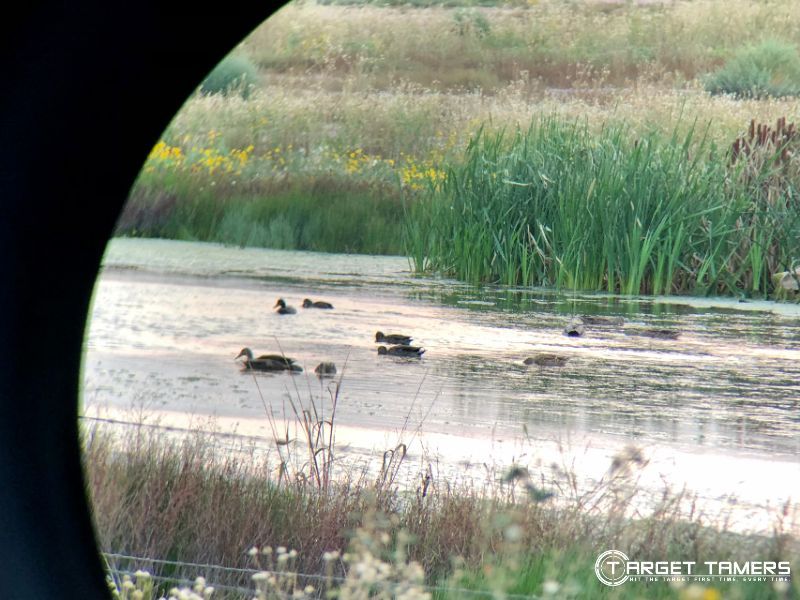
As a general rule, an 8x42 is one of the best binoculars for bird watching. The 8x magnification is high enough to observe birds to at least 200 yards with steady offhand use and a wide FOV. The 42mm objective lenses provides a bright image without adding excessive weight and size.
Since bird watching can be done in various terrains from within trees and across lakes to open country and the skies, you must consider the terrain. You must also consider light conditions for when you’re in thick timber, cloud coverage, and observing in low light.
It’s generally agreed that 7x and 8x are excellent for causal birding and following moving targets and smaller ones like butterflies. But 10x offers a versatile magnification for other applications from the same binocular as well providing closer views when targets are at a greater distance. See more about 8x VS 10x here.
Greater magnification is not usually recommended for birdwatching, but it can be beneficial if you generally observe from a fixed position when it is mounted. It’s not so great for following moving birds but can provide greater detail.
Best Binocular Magnification for Elk Hunting
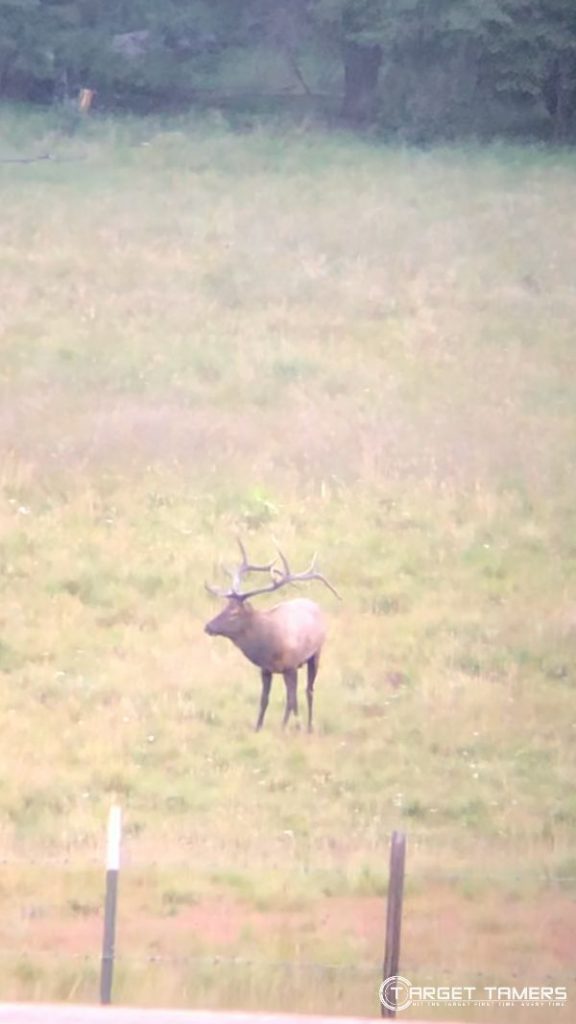
The best magnification for elk hunting will essentially come down to hunting style and terrain. Calling in elk or while in the timber, low power of 8x is beneficial in these scenarios. To spot and then close the distance, higher power of 10x and 12x can yield results.
Larger apertures of 42mm and 50mm are the best pairings for elk hunting, although 56mm apertures can be excellent for dawn/dusk conditions. The twilight factor can help you determine its resolving ability in low light and is especially worth it when you have ED glass and excellent coatings.
Keep in mind that going up in power and aperture can mean a heavier binocular that is best mounted for steady glassing to resolve and pick apart details.
Best Binocular Magnification for Stargazing
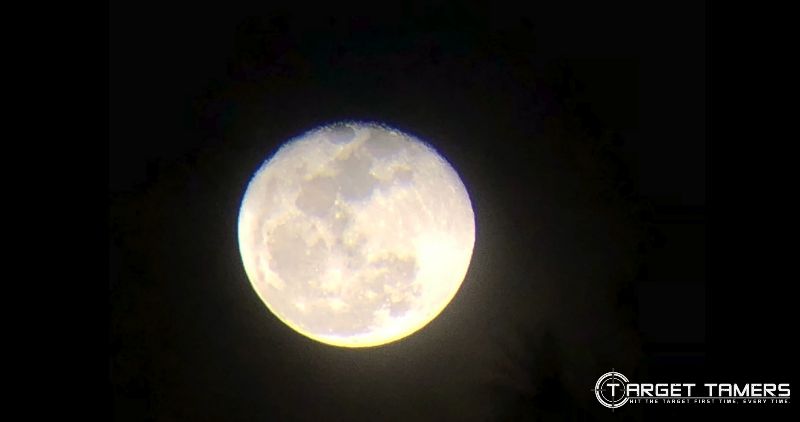
On average, binocular magnification for stargazing will vary depending on your astronomy goals. Starting off with binoculars to navigate the night sky is the recommendation to a beginner and 10x50 binoculars are well suited to the task.
10x and 12x is still very low magnification for stargazing, but it does allow for excellent lunar and star cluster observation and can easily be used freehand. Many seasoned astronomers will have a pair of binoculars available for the wide FOV to first spot celestial targets before using their telescopes to home in.
However, magnifications of 20x and 25x paired with 70mm objective lenses can provide better resolving power on planets to make out planetary features and to spot DSOs (Deep Sky Object). The larger size and magnification will require mounting and sacrificing FOV.
Best Binocular Magnification for Wildlife Observation
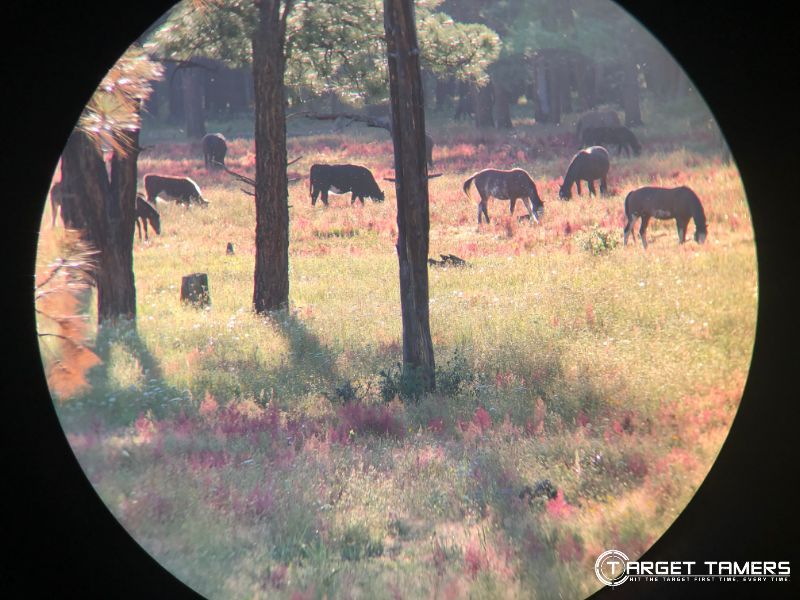
The 8x42 and 10x42 binoculars have the most popular magnification for wildlife viewing. Between the two, there is minimal performance difference for observing wildlife in their natural habitat, and they are often very competitive in size and weight.
30-32mm binoculars will be very compact and comfortable to have on your person all day long. But you can also find competitive FOV and improved brightness specs with 42mm binoculars. 50mm binoculars are also beneficial for observing wildlife as they can provide an even brighter image in dim conditions with better resolving power.
Best Binocular Magnification for Boating
The 7x50 is a highly recommended binocular for boating and all marine use. The 7x power is both high and low enough to acquire some distance while following targets with steady images while on a moving platform. With 50mm apertures, it’s a performer in the early and late hours of the day.
While 7x is considered the optimal power range for use at sea, you can opt for binoculars with higher power that have integrated electronic image stabilization. This feature is very expensive, and you will be dependent on batteries, but it’s a viable option for high-powered binocular use.
Of course, you can use your 8x42 or non-marine binoculars and have no complaints. However, other features to look for will be internal rangefinding, compass, floating straps, and fully water and fogproof protection.
Best Binocular Magnification for Sporting Events
The lower powers will be recommended as the best magnification for sporting events. This range will be between 6x to 10x. Wide FOV, freehand use, and image stability are the key benefits of using a low powered binocular for watching football, cricket, and all types of spectator sports.
Wide FOV specs can be a feature of note as you want to be able to follow players throughout the game without losing action in the periphery. The lower power will give close-up seeing without compromising on image stability.
If sporting events take place during the day or in well-lit stadiums, you can make the most of a compact binocular like a 10x25, 7x28, or 8x32. If games are in in poor lighting conditions at night, a slightly larger objective lens size of 42mm can improve brightness and visibility.
Best Binocular Magnification for Safari
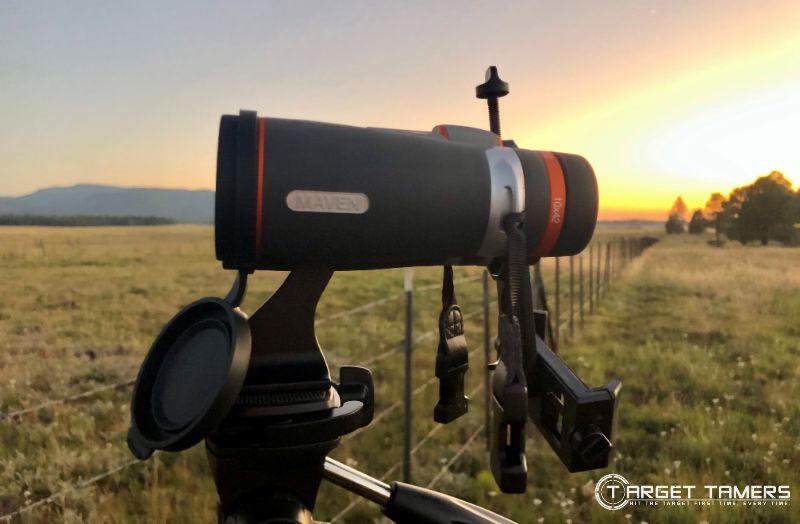
Magnification for safari binoculars will be much akin to that of wildlife viewing. Between 7x to 10x is the ideal power range for safari jeep tours and bush walking. Compactness, low power, wide FOV, and high brightness are the benefits.
The right magnification will also depend on your activities while on safari. If you’re photographing simultaneously, you’ll want a compact pair to stash away while you photograph but can easily pull out for offhand use.
7-10x is recommended because you’ll likely be in a vehicle (jeep, open bus, etc.) on a guided tour, and low power can help to improve your viewing while on a moving platform with ultimate stability when parked. It will also provide versatility between magnification and FOV to follow eagles and vultures in flight to spotting a lion pride or giraffe in the distance.
You can also consider thermal, night vision, or image stabilization binoculars to enhance your safari experience. It may be a once-in-a-lifetime buy but a grand safari tour in Africa is a once-in-a-lifetime experience.
Best Binocular Magnification for Whale Watching
Whale watching can be done on shore or on-board a boat. This calls for differing magnification ranges for both scenarios. 7-8x magnification is recommended for whale watching on a water vessel. 15x and higher magnification is recommended for distant whale watching from land.
Compact 28-32mm binoculars can be easy to handle on board especially if you’re glassing with one hand while performing other tasks like keeping kids in the boat or steering. Larger binoculars will provide a brighter image especially in dawn/dusk lighting conditions but will need two hands to steady the binocular.
From the shore, whales will be quite the distance away and having anything less than 15x magnification may be disappointing. Larger objective lenses will allow for a lot of light and with great glass, it can provide excellent resolving detail at extreme distances.
The benefits of going large on shore is that size and vibrations become less of an issue as you can mount it to a tripod and/or pay extra for image stabilization.
Best Binocular Magnification for Concerts
The stage couldn’t be more different from one to the next when it comes to concerts. Indoor events like the theater and opera would require very low magnification of 3-4x. Outdoor spectator sports and night concerts can require higher magnification of 7-10x.
In these types of conditions, tripod-mounting is not feasible, so low magnification and compactness is key. You’ll also desire a wide FOV to keep up with performers across the stage while having off-axis peripheral view of the action.
Other Binocular Features To Consider
Thinking beyond just magnification, you should consider other binocular features that will affect your glassing experience in the outdoors. These are a handful of perspectives to be aware of when choosing binoculars for your intended purpose.
- Magnification: Can indicate best performance used freehand or on tripod.
- Aperture: Objective lens size determines how much light can be ‘collected’ and used.
- Twilight Factor: Number that indicates its resolving ability in lowlight conditions.
- Eye Relief: Distance in millimeters that can indicate compatibility for use with glasses.
- Quality Glass/Coatings: Essential factor in overall optical performance.
- Size/Weight: Determines portability and ease-of-use in the field.
- Build Quality: Protection against the elements and prevent internal fogging and damage. Can indicate its longevity for long-term or one-time use.
- Cost: May be the determining factor to overall binocular quality and performance.
Which Binocular Magnification is Better?
Overall, the better binocular magnification is the one for the job. Too much power and you can get lost in the FOV in close-quarter environments with an image that is vulnerable to the slightest vibrations. Not having enough power can leave you wanting for details across distances.
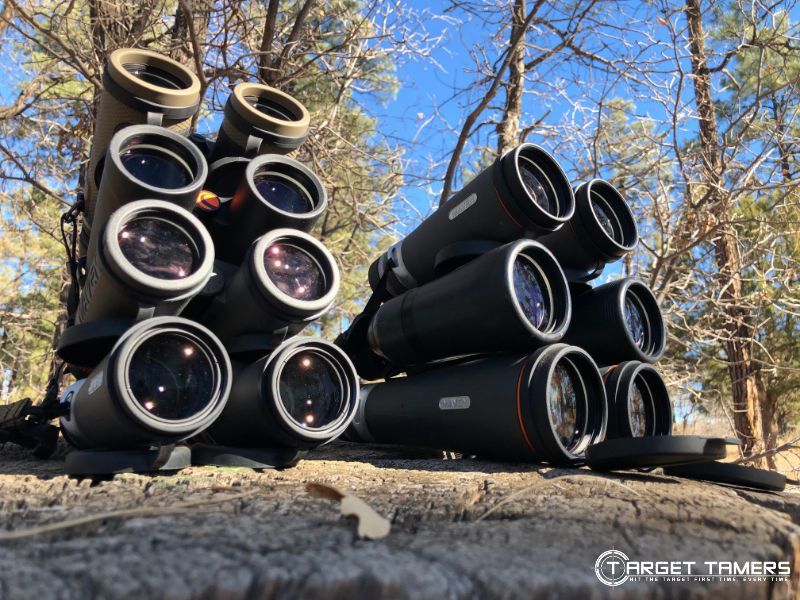
It’s not the magnification alone that makes a binocular but the totality of all its components. Narrowing down the options may very well come down to magnification. It goes without saying that it should be an informed decision based off your observation needs and intended applications.
Further Reading
- Zeiss Terra ED 10x42 Binocular Review (High Quality & Affordable Price)
- Zeiss Conquest HD 10x42 Binoculars Review (Compact & High Definition)
- What Do the Numbers On Binoculars Mean?
- Vortex Viper HD 10x42 Binocular Review (VPR-4210-HD) with ArmorTek
- Vortex Razor HD 12x50 Binocular Review - Very High Quality (RZB-2104)

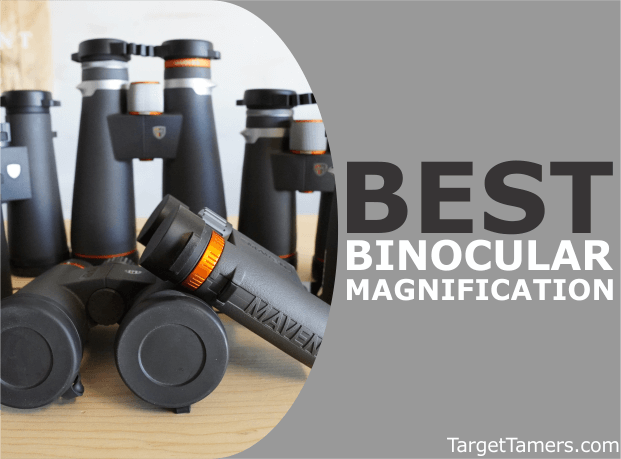



Thanks so much for the article on binocular magnification and settings. One of the few times I was specifically looking for information on how to choose the appropriate binoculars and your writing was sot on. Very appreciated!
Glad it helped!